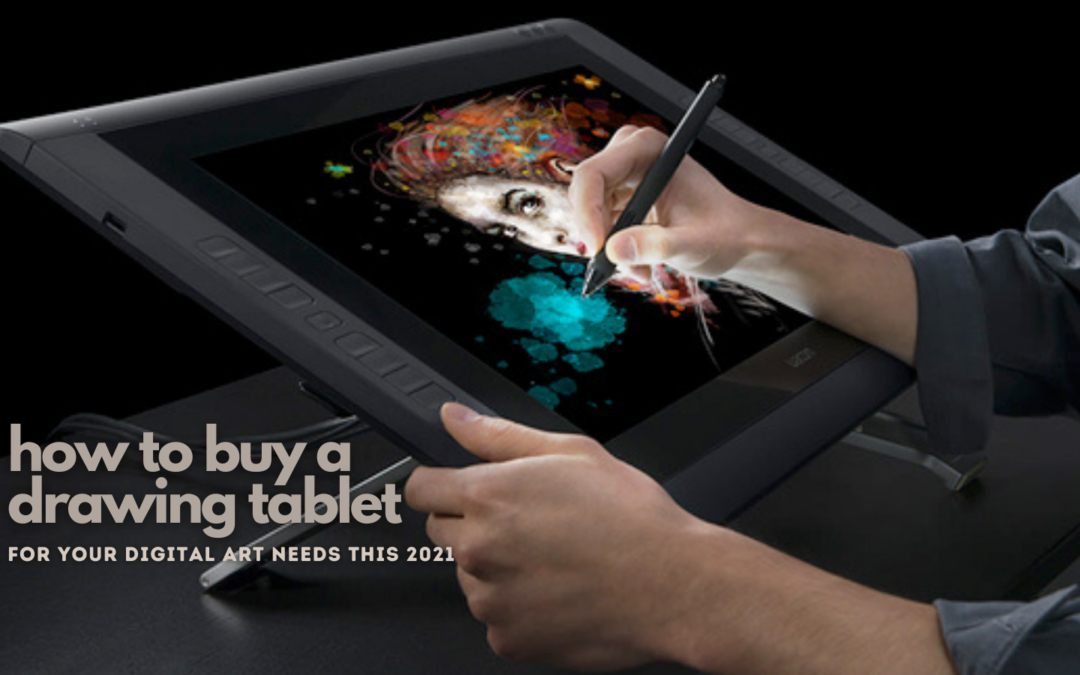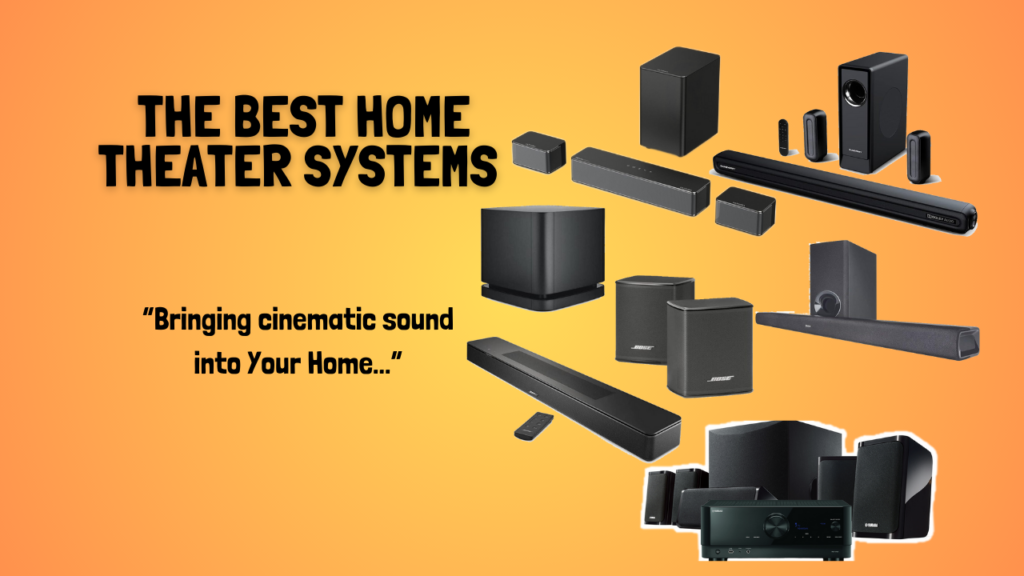Everything has gone digital in this day and age. From the use of smartphones. computers, home appliances, and even the art we consume. With that said, if you’re wanting to start a profession or are just simply interested in digital art, a drawing tablet is one of the best gadgets to help you hone your skills. But with so many choices available in the market, it is quite easy to get lost and feel confused about which one is best suited for you. Fortunately, I’m here to help you out so you know which features and specifications to consider and look out for. So if you truly want to get your money’s worth and get the best drawing tablet you can get your hands on, just keep reading our guide on how to buy a drawing tablet this 2021 here.
Check Out Our Top Recommendations For The Best Drawing Tablets Of 2021 Here.
Are Drawing Tablets Worth It?

If you’re new to digital art, attempting to learn everything there is to know about drawing tablets can sometimes be a difficult endeavor. There are several models to pick from on the market, each with its own set of advantages and disadvantages as well as gimmicks and features exclusive to its brand.
It’s understandable that a beginner might be a little overwhelmed with so much information to take in. But at the same time, shopping for a drawing tablet can also be a lot of fun. Choosing your first drawing tablet can bring out a certain excitement for artists. It’s like starting a new adventure and you have so much to explore ahead of you.
On the other hand, if you’re still undecided about whether or not a graphics tablet is worth the money, then let me just go right to the point. It is well worth every penny. A drawing tablet includes capabilities that will allow you to improve your creativity and productivity in ways that you won’t be able to do with your traditional mediums of art.
Such an example is seen whenever you make mistakes. On a drawing tablet, a mistake can easily be undone with a simple press of a button and you won’t have to start all over again or waste more paint or paper covering it up. However, the same can’t be said when you’re painting on a canvas.
If you’ve spent your entire life creating art on paper, drawing on a screen may feel strange at first. But once you’ve grown used to the sensation, you’ll discover that digital art is a lot more fun and a great way to boost your creativity.
Knowing The Different Types Of Drawing Tablets
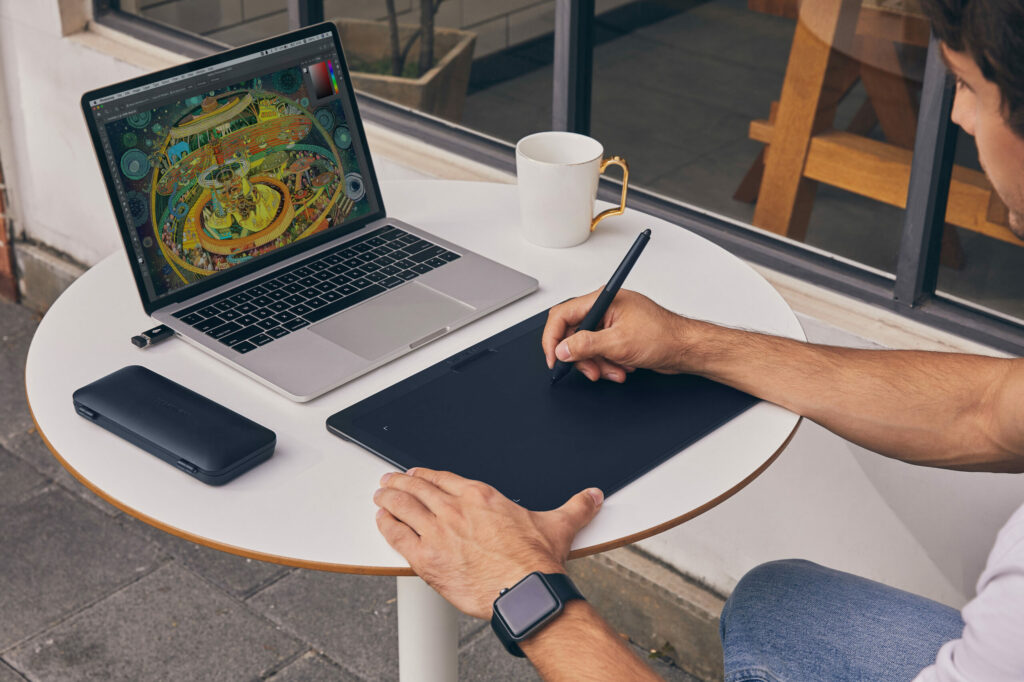
A large number of artists in the business refer to graphic tablets as “pen” or “drawing” tablets. A lot of manufacturers tend to interchange these terms as well, so it’s easy to get confused sometimes. While both of these devices are basically the same tools that allow you to express yourself in ways other than painting and sketching, there is a tiny yet major difference between them.
To help clear things out, below are brief explanations discussing the two.
Pen Tablets
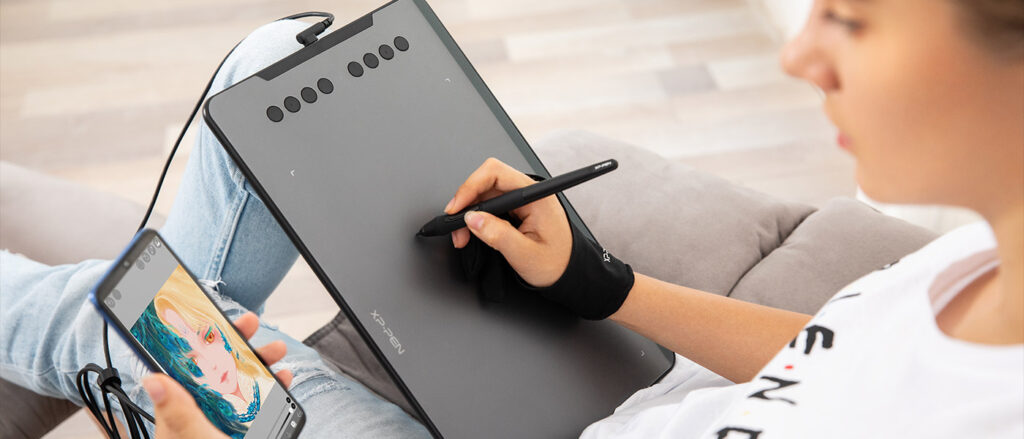
To begin with, pen tablets do not have built-in screens. They’re just responsive pads with digital pens that have “express keys” to aid you in your drawing sessions. You’ll need to hook this into your computer or any external monitor in order to look at the art you’re creating in real-time.
Personally, I find using a pen tablet for the first time to be quite challenging and a little weird. You’ll have to become used to concentrating on two tasks at once. To ensure that what you’re drawing on the pad is accurate then constantly have to look back and forth between two monitors. Because of this, not a lot of digital artists would prefer this over a drawing tablet that has a built-in screen.
That said, there are also a decent lot of pen tablets in the market that are amazing and well worth the try. A good example of this is the Pen Tablet Medium from a new company called Xencelabs. This particular pen tablet was designed by former Wacom employees that used all their knowledge about digital art to create a premium device that can rival Wacom’s high-end drawing tablets without the high price point.
With that in mind, pen tablets are also usually a lot cheaper compared to their counterparts with built-in displays. So if you’re on a very tight budget, you can definitely consider getting this sort of model if you don’t mind the lack of a screen. Also, once you get the hang of focusing on two things at once, drawing on pen tablets will be a breeze for you.
Want To Check Out Our Top Pick For A Pen Tablet? Read Our Review Of The Xencelabs Pen Tablet Here.
Drawing Tablets
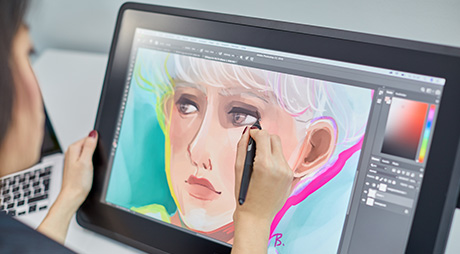
Drawing tablets, on the other hand, have touch screens that may be utilized as extensions of your computer’s display. They typically perform the same functions as a pen tablet. But with the added benefit of a display so you don’t have to switch your gaze from your hand to your computer monitor to make sure your artworks are done to your liking.
Compared to pen tablets, though, they have higher costs so they’re generally more expensive too.
So Which One Should You Get?
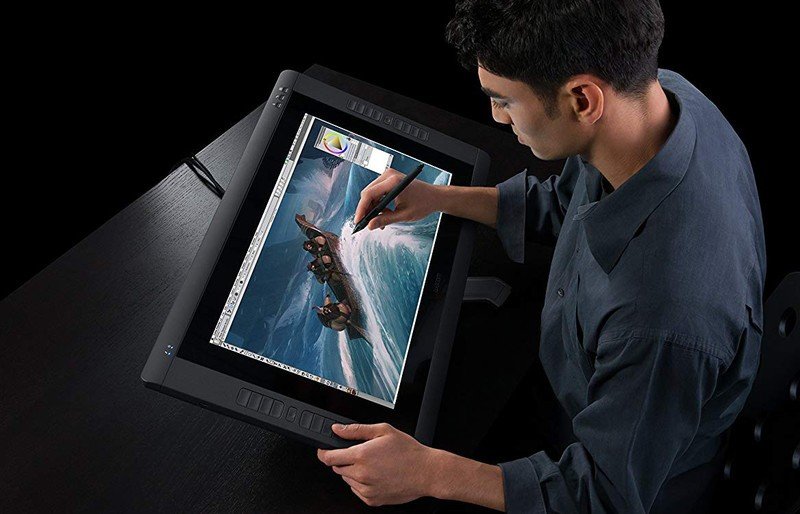
At the end of the day, it’s completely up to you which of these drawing tablets would suit you better. Personally, I would suggest getting a drawing tablet with a built-in display as it is much easier to work with. But if your budget is limited or you simply prefer a non-display pen tablet, then the choice is yours.
Do keep in mind that both tablets lack storage and must be connected to another device such as a computer. However, a drawing tablet allows you to produce and show your work on the same surface, unlike a pen tablet.
Furthermore, regular tablets, like the Apple iPad or Samsung‘s Galaxy Tab, are also devices that can double as drawing tablets. They normally come with more functions than just digital art capabilities and can be used for other tasks for work and/or school. But they’re also a lot more costly since they are basically portable computers.
Want To Check Out Other Drawing Tablets? Read Our List Of The Best Drawing Tablets Of 2021 Here.
Things To Consider
Finding the best drawing tablet for yourself can be a little frustrating if you don’t know where to start. Having endless options available in the market isn’t always the most helpful and can only confuse you further. To help make things easier for you, I’ve compiled a list of things you should keep an eye out for and consider once you’re shopping for a drawing tablet.
Size

When it comes to the size of a drawing tablet, it’s crucial to remember that both smaller and larger models have their own advantages and disadvantages. For starters, a larger drawing tablet often comes at a higher price, and you may not always get the best value for your money if you don’t require such a large device.
A larger drawing tablet, on the other hand, typically signifies a greater active area. In case you’re unaware, the surface on which you may draw is known as the active area. The larger your active area, the less zooming and panning you’ll need to do on various portions of your project. A smaller tablet, on the other hand, can provide a higher screen resolution for less money.
Many artists in the business believe that these more compact versions are sufficient for their drawing needs. So if you are just getting started with digital art, it’s best to invest in a small drawing tablet first to avoid wasting a lot of money in case you get bored of it too quickly.
Finally, think about the type of work you want to do. The sort of art you want to create will almost certainly be influenced by the size of your drawing tablet. As a result, I strongly advise you to choose a model with a large enough active area to fulfill your specific requirements.
Resolution
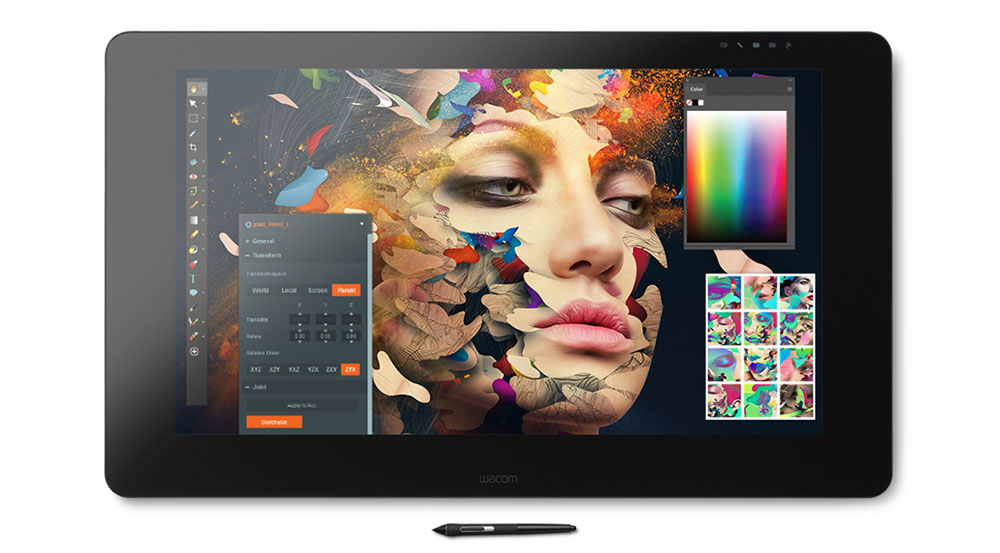
Before selecting a drawing tablet, the resolution is by far the most important factor to consider. Basically, the higher the resolution of your drawing tablet, the more you’ll be able to dive into the finer points of your digital work. If you have the funds, I strongly advise you to purchase the best resolution drawing tablet you can buy. But if you’re on a tight budget, you’ll have to make a few concessions here and there.
You must also consider if you are creating digital art as a pastime or as a job. For a small webtoon or even a simple logo design, fine detail may not be necessary, and you can usually get away with a lower-resolution drawing tablet. However, if you’re making photorealistic drawings or your profession requires precise details, you’ll need to invest in a drawing tablet with a much higher resolution to achieve the best results. Consider this as an investment in both yourself and your career.
Pressure Sensitivity & Tracking Speed
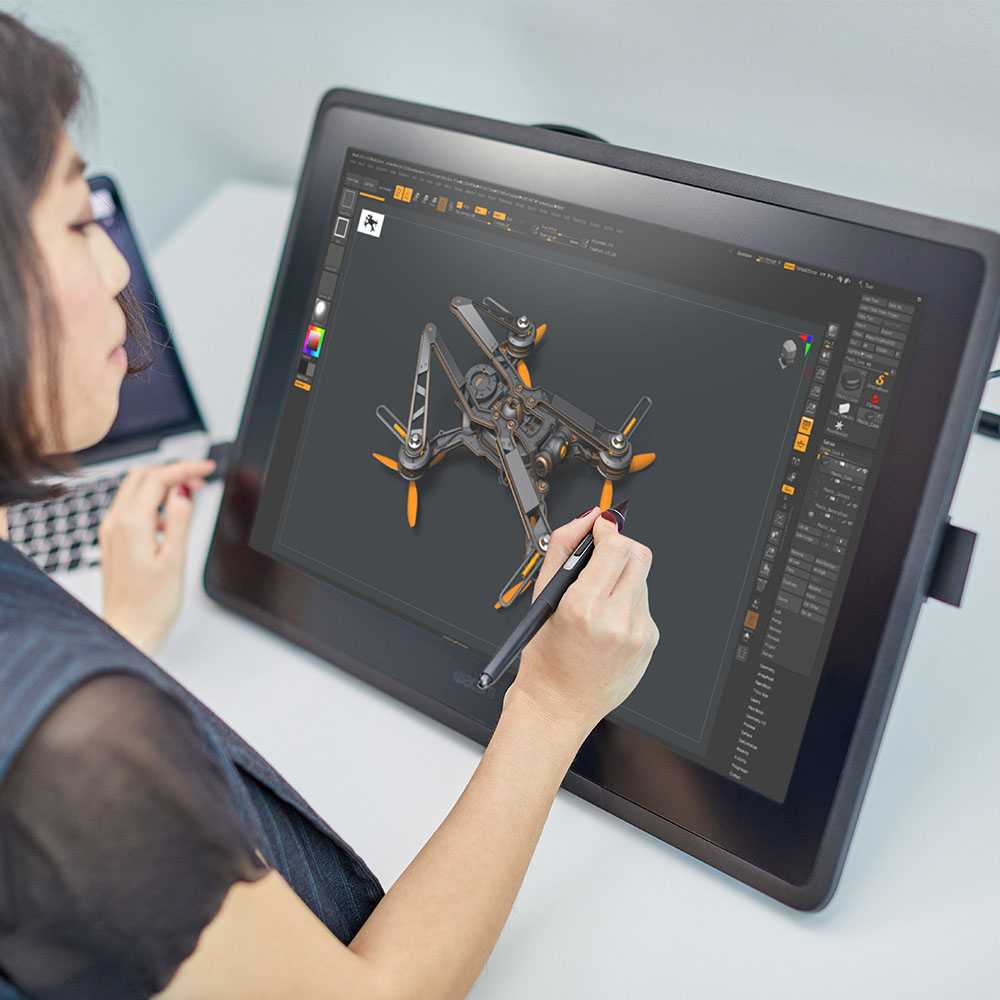
Pressure sensitivity is a feature found on many of today’s drawing tablets that allows you to vary the depth of your stroke based on how hard you press the pen on the active area. This will also offer you the most authentic experience similar to drawing on actual paper or canvas. But keep in mind each model may have a wide range of sensitivity and deliver a variety of sensations.
The amount of quality you can achieve with your digital work is heavily influenced by pressure sensitivity. Pressure sensitivity may not be an issue if you only need to create little drawings or you only do digital art for enjoyment. On the other hand, this is something to consider if you’re a professional or take your digital drawings seriously.
Meanwhile, the tracking speed is measured by PPS (points per second). This reduces the time it takes for a stroke on the active surface to be recognized by the linked computer. The majority of modern drawing tablets have extremely quick and immediate tracking rates.
Older versions of drawing tablets, on the other hand, still suffer from delays or lags. It’s advised to avoid these devices and instead go for the latest models or ones that offer excellent responsiveness.
Express Keys
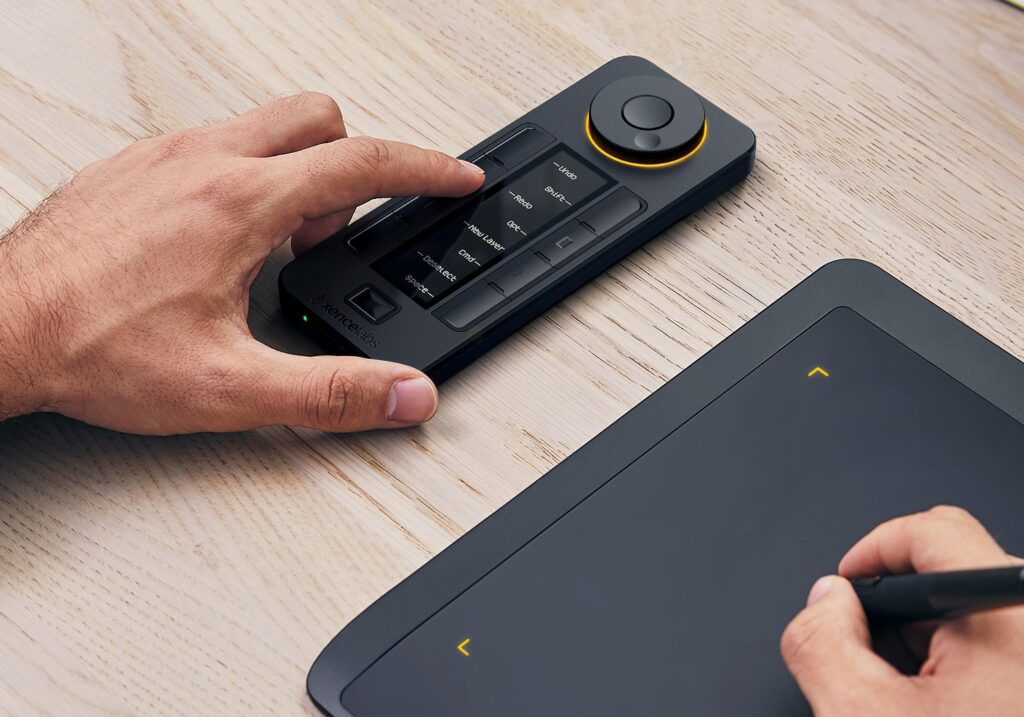
Most drawing tablets allow you to customize the buttons or express keys to do certain tasks based on your preferences. Personally, I think this function will be quite useful to any digital artist. It saves you a lot of time, especially if you have to go back and forth on details on your designs frequently.
Depending on the drawing tablet you use, the amount of customizable buttons accessible and what each button can accomplish varies. So, if you know you’ll need a hotkey for a specific sketch, be sure the tablet you’re considering has this functionality. Most of the time, you’ll be able to program them for virtually almost anything.
Conclusion
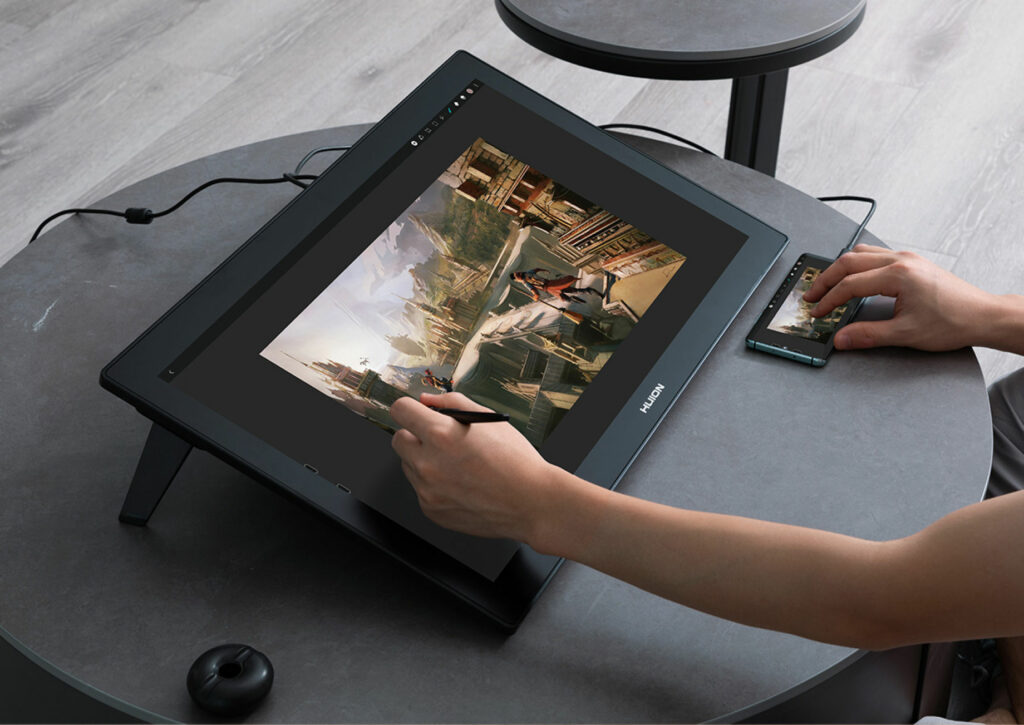
Now that we have finally reached the conclusion of our guide on how to buy a drawing tablet, hopefully, I was able to narrow down your options for you and you can now decide on which drawing tablet to start your digital art journey with. Whichever you choose, I hope it’s one that you will surely enjoy using and will last you for the years to come.
Have you already bought your own drawing tablet? Was our guide on how to buy a drawing tablet this 2021 helpful? Let me know in the comments section below if you have any suggestions, insights, or questions to ask. I would love to hear all your thoughts!
Recommended reading for you:
- The Best Drawing Tablets 2021: Time To Get Creative!
- Wacom Cintiq 22 Review: A Great Investment For Digital Artists
- Dell G5 15 SE Gaming Laptop Review: An Excellent Gaming Laptop For The Money
- HP Pavilion Gaming Laptop Review: One Of The Best Entry-Level Laptops For Gaming
- Best Gaming Mouses 2021: Our Top Picks For All Gamers
- Logitech G502 Lightspeed Review: The Best Wireless Gaming Mouse?
- Best OLED TV For Gaming 2021: The Most Vibrant Screens For Your Gaming Sessions
- LG CX OLED TV Review: Excellent But Expensive
- The Best 4K TV For Gaming 2021: Time To Level Up Your Screens
- Samsung QN90A Review: Better Than OLED TVs?
- Best Android Tablets For Gaming In 2021: Our Top Picks
- The Best Headphones For Gaming In 2021
- Best 4k Gaming Monitors 2021: The Sharpest & Brightest Displays
- Best Gaming Desks 2021: Reign Supreme In Comfort & Style
- Xencelabs Pen Tablet Review: Is It Better Than Wacom?
- How To Buy Laptops For Gaming In 2021
- LG OLED C1 Review: The Best 4K TV For Gaming?
- Razer Naga Pro Review: The Best Gaming Mouse For MMOs
- Sony Bravia A9S Review: What You Need To Know
- The Amazon Fire HD 10 Kids Pro Review: A 2021 Review On The Best Tablet For Your Child
- Microsoft Surface Pro 7 Review: The Complete Package?
- SteelSeries Arctis Pro Review: The Best Gaming Headset For Audiophiles
- Razer BlackShark V2 Pro Review: The Best Wireless Gaming Headset?
- Best Computer Gaming Chairs For Adults 2021: For Next Level Gaming!
- Cougar Argo Gaming Chair Review: Is It The Next Best Thing?
- The Cougar Mars 120 Gaming Desk Review: Your Superior Gaming Desk With LED Lights
- The Arozzi Arena Gaming Desk Review: Go Big Or Go Home With Your Gaming Setup
- Best Computer Gaming Chairs For Adults 2021: For Next Level Gaming!

